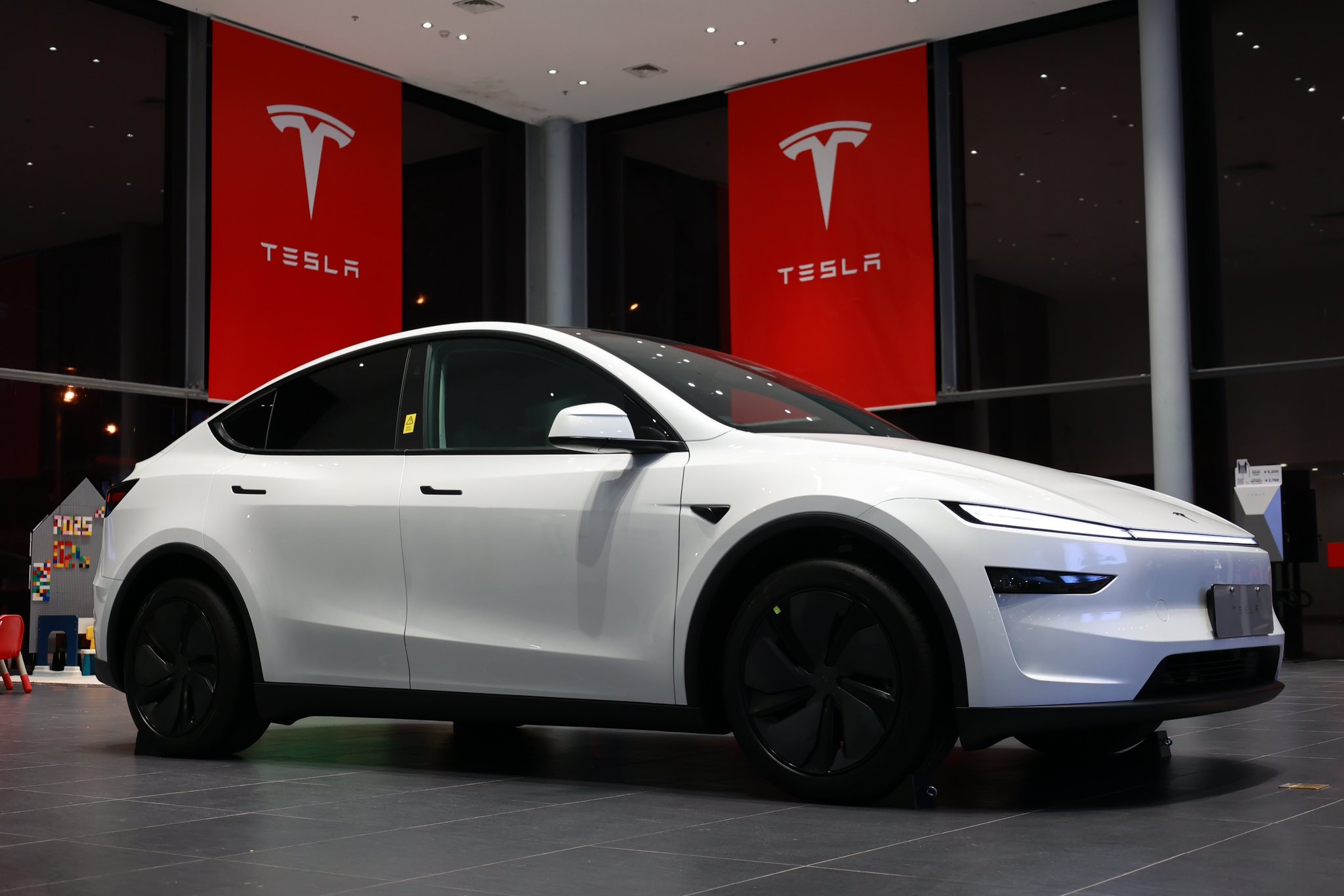In today’s automotive world, infotainment systems have evolved from simple radio controls to complex command centers managing everything from navigation and climate to smartphone integration and vehicle diagnostics.
As these digital cockpits become increasingly sophisticated, the gap between well-executed and poorly implemented systems widens dramatically.
The best infotainment systems seamlessly blend intuitive interfaces with responsive performance, enhancing the driving experience without creating distractions. Conversely, problematic systems can transform simple tasks into frustrating ordeals, with laggy touchscreens, confusing menus, and unreliable connectivity.
This contrast has significant implications for driver satisfaction and safety. A well-designed infotainment system reduces cognitive load, allowing drivers to keep their attention where it belongs, on the road. Meanwhile, a poorly executed system becomes a dangerous distraction, requiring excessive focus and creating frustration at highway speeds.
As consumers increasingly prioritize digital experience alongside traditional automotive metrics like performance and fuel economy, manufacturers face mounting pressure to deliver technology that works.
In this comprehensive analysis, we’ll examine five infotainment systems that consistently deliver seamless performance and five that routinely fall short, exploring what makes each succeed or fail in real-world conditions, and what these experiences mean for drivers going through an increasingly digital automotive future.
5 Cars With Infotainment Systems That Just Work
These vehicles feature intuitive, responsive infotainment interfaces that seamlessly integrate with your devices while remaining refreshingly simple to use even while driving.
Unlike their frustrating competitors, these reliable systems boot quickly, respond promptly to inputs, and maintain stable connections without the dreaded freezing or crashing during essential functions.
From crystal-clear displays to thoughtfully designed menus, these exceptional infotainment experiences enhance your driving enjoyment rather than becoming a source of constant irritation.
1. Tesla Model 3/Y with MCU3
Tesla’s minimalist approach to vehicle interiors places extraordinary emphasis on its infotainment system. The centerpiece of every Model 3 and Model Y is a 15-inch touchscreen that replaces nearly every physical control found in traditional vehicles.
While this arrangement initially raised eyebrows among automotive purists, Tesla’s execution has silenced many critics and established a new paradigm for in-car technology.
The current MCU3 (Media Control Unit 3) hardware delivers exceptional responsiveness that feels more like using a high-end tablet than a car interface.
Actions register instantly, animations remain smooth regardless of task complexity, and the system boots within seconds of entering the vehicle. This technical foundation supports an interface designed with a clear information hierarchy, featuring large touch targets that minimize precision requirements while driving.
Tesla’s vertical integration gives it a significant advantage in creating cohesive experiences. By developing both hardware and software in-house, Tesla eliminates the compromises commonly found in systems cobbled together from various suppliers.
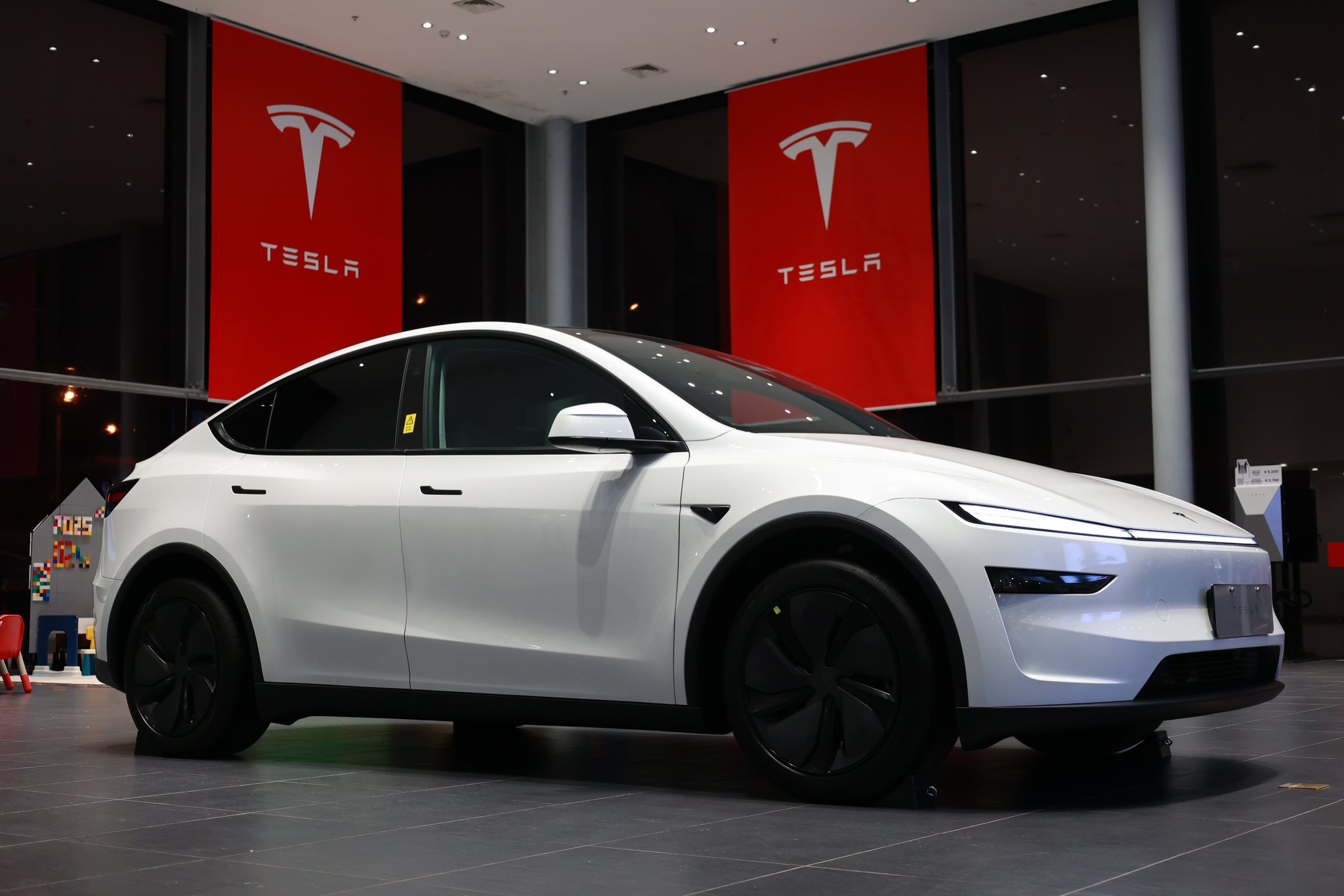
This holistic approach extends to regular over-the-air updates, which continuously refine functionality and add features without requiring dealer visits. Navigation stands as a particular highlight, with detailed, real-time traffic visualization and intelligent routing that accounts for charging stops on longer journeys.
The system’s accuracy in predicting arrival times and battery levels inspires confidence during travel planning. Integration with Tesla’s Supercharger network remains unmatched, displaying charger availability and automatically preconditioning the battery when approaching a planned charging stop.
Entertainment options abound, with the ability to stream services like Netflix, YouTube, and Spotify while parked, plus built-in arcade games that take advantage of the car’s steering wheel and pedals.
Voice commands handle everyday functions with commendable accuracy, recognizing natural language patterns without requiring strict command phrasing.
What truly distinguishes Tesla’s system is its foundation in user-centered design. Rather than digitizing traditional car controls, Tesla reimagined the driving interface around digital workflows, creating an experience that feels native to screens rather than awkwardly translated from physical buttons.
This philosophy extends to continual refinement based on user feedback, with regular updates addressing pain points identified by the driver community.
While Tesla’s approach isn’t without criticism particularly regarding the placement of essential controls like wipers and drive modes in touchscreen menus the consistent performance, thoughtful design, and regular improvement cycles have created an infotainment benchmark that competitors continue struggling to match.
2. RAM 1500 with Uconnect 5
Stellantis’ Uconnect system has quietly evolved into one of the automotive industry’s most balanced infotainment platforms, with the latest Uconnect 5 implementation in the RAM 1500 representing a masterclass in blending digital innovation with practical usability.
Unlike manufacturers that force all interactions through touchscreens, RAM maintains a thoughtful hybrid approach that combines a responsive 12-inch display with physical controls for frequently-used functions.
The Uconnect 5 system’s greatness begins with its technical foundation: a processing platform delivering five times the power of its predecessor, enabling instantaneous response to inputs and smooth animations even when running multiple applications.
This performance headroom prevents the system from becoming sluggish over time, a common complaint with competing platforms that barely meet minimum specifications at launch.
Interface design demonstrates exemplary understanding of contextual needs. The home screen features a customizable layout with widget-style tiles that provide information at a glance while facilitating quick access to preferred functions.
Unlike systems that force users into complex menu structures, Uconnect 5 emphasizes shallow navigation hierarchies, with most functions accessible within two taps. The split-screen capability brilliantly balances information density with readability, allowing simultaneous display of navigation and media controls without overwhelming the driver.
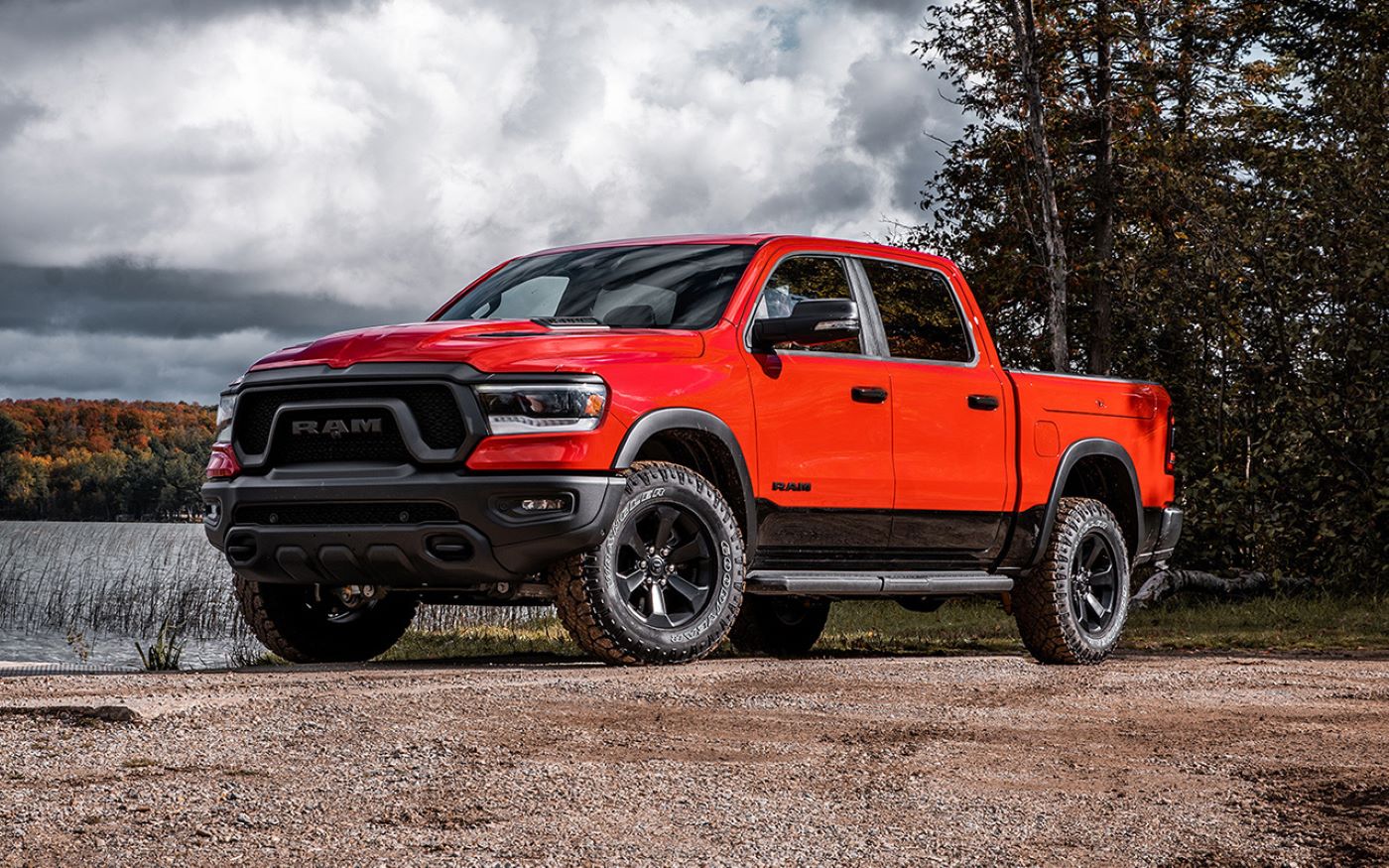
RAM’s approach to physical controls deserves particular praise. Climate functions, volume, and tuning retain dedicated knobs and buttons, allowing operation by feel without visual confirmation.
This thoughtful integration acknowledges the reality that certain interactions remain faster and safer through tactile controls, particularly while driving in challenging conditions. The volume knob substantial, perfectly weighted, and positioned within easy reach—exemplifies this attention to ergonomic details.
Wireless connectivity for both Apple CarPlay and Android Auto works flawlessly, connecting automatically when entering the vehicle without the frustrating reconnection delays plaguing many competitors.
The native navigation system stands strong even against smartphone alternatives, with clear guidance, accurate traffic information, and thoughtful features like the ability to add waypoints simply by pressing anywhere on the map.
Voice recognition capabilities have improved dramatically with Uconnect 5, now handling natural language commands without requiring precise phrasing. Saying “I’m cold” activates the heater, while “find a gas station on my route” brings up contextually relevant options without disrupting navigation functionality that reduces driver distraction significantly.
Perhaps most impressively, the system demonstrates remarkable stability, operating for months without glitches, crashes, or the random reboots that plague less refined platforms.
This reliability transforms the infotainment system from a potential frustration point into a seamless extension of the driving experience, building trust that commands will execute consistently regardless of conditions.
By balancing cutting-edge technology with practical usability considerations, RAM’s implementation of Uconnect 5 exemplifies how thoughtful design can enhance rather than complicate the relationship between driver and vehicle.
3. Kia EV6 with Connected Car Navigation Cockpit
Kia’s meteoric rise in infotainment quality culminates in the EV6’s Connected Car Navigation Cockpit system, which delivers a compelling blend of visual sophistication, intuitive operation, and reliable performance.
What makes this system particularly remarkable is how effectively it manages complexity, providing advanced functionality without overwhelming the user with options.
The hardware implementation strikes an ideal balance between digital and physical interfaces. Twin 12.3-inch displays create a panoramic digital cockpit, with the left screen handling instrument cluster duties while the right manages infotainment functions.
This arrangement maintains proper information separation while creating visual continuity across the dashboard. Below the central screen sits a brilliant dual-mode control panel that switches between climate and audio functions with a single touch, maintaining physical controls for critical adjustments while reducing dashboard clutter.
Response times set new standards for non-luxury vehicles, with inputs registering instantly and screens transitioning without perceptible delay. This performance remains consistent regardless of system load or background processes, creating confidence that controls will respond predictably in all driving situations.
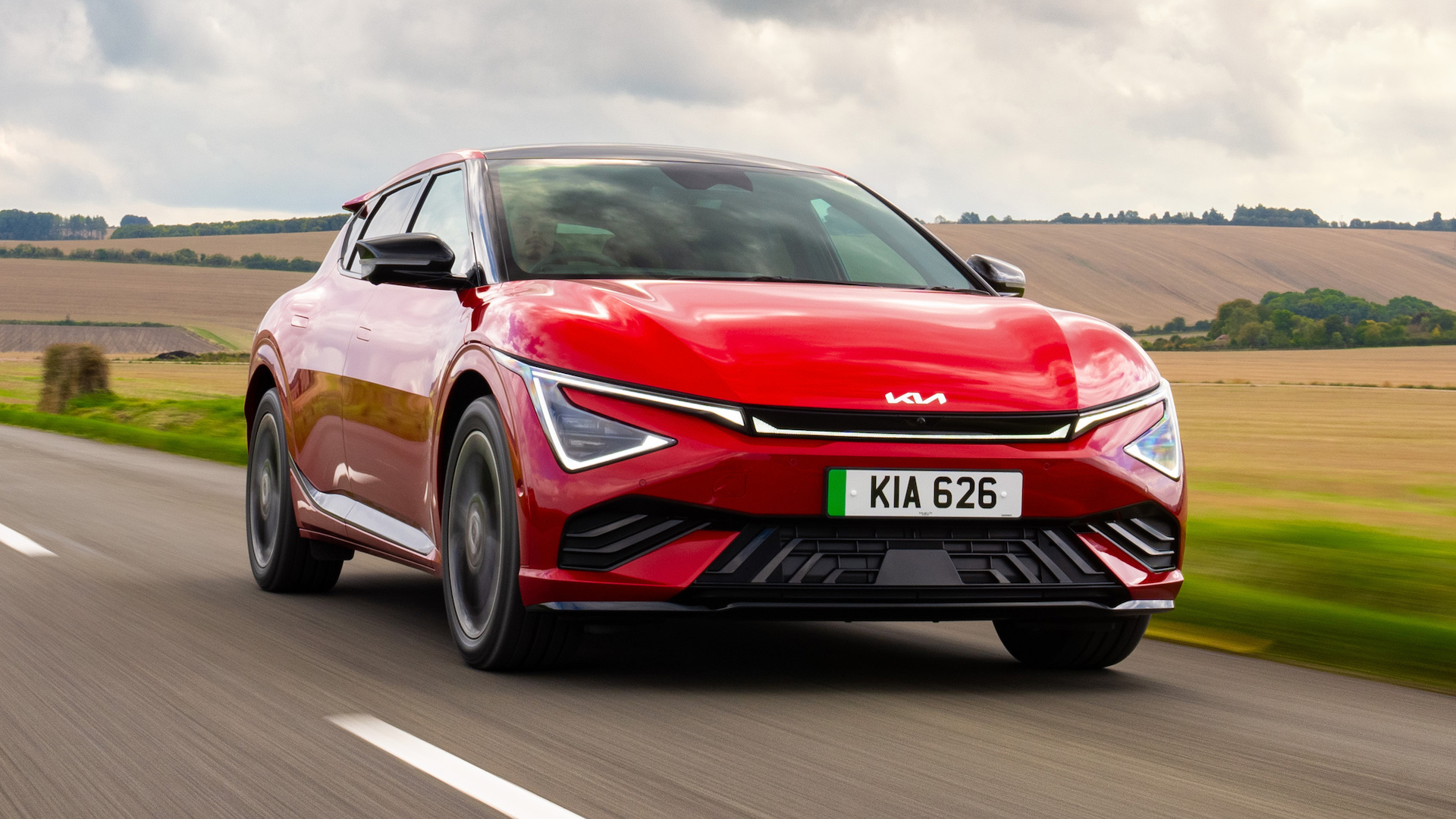
Boot time deserves special mention; the system reaches full functionality within seconds of vehicle entry, eliminating the frustrating wait times common in competitors.
Interface design demonstrates a clear understanding of automotive use cases. Icons feature distinctive shapes and colors that remain identifiable in peripheral vision, reducing the visual focus required for operation.
Text elements prioritize legibility over stylistic flourishes, with excellent contrast and appropriate sizing that remains readable across lighting conditions.
The home screen organization follows logical grouping principles, keeping related functions together rather than arbitrarily separating them across multiple menus.
Connectivity options cover every modern need without compromising stability. Wireless Apple CarPlay and Android Auto connect reliably and maintain consistent performance without the dropout issues plaguing some implementations.
The native Kia Connect features work harmoniously alongside these smartphone projections rather than fighting for prominence, with each handling the tasks best suited to their capabilities.
Navigation excellence combines accurate mapping with thoughtful EV-specific features. The system not only plots efficient routes but also integrates charging station information with real-time availability status and charging speed data.
This comprehensive approach removes range anxiety from the equation for electric vehicle owners, providing confidence during daily commutes and longer journeys.
Voice recognition capabilities demonstrate remarkable contextual awareness. They understand commands like “I need coffee” to initiate a search for nearby cafes and connect with the appropriate contact without requiring exact name pronunciation. This natural language processing significantly reduces the cognitive load of system interaction while driving.
Perhaps most impressively, the EV6’s infotainment system demonstrates a cohesive design philosophy throughout. Rather than feeling like disparate components assembled from various suppliers a common issue in automotive technology every aspect of the interface shares consistent visual language, interaction patterns, and performance characteristics.
This unified approach creates an experience that feels intentionally crafted rather than coincidentally assembled, setting a new standard for mainstream vehicle technology.
4. Volvo XC60 with Google Built-In
Volvo’s decision to partner with Google for its latest infotainment platform represents one of the most successful technology collaborations in automotive history.
The XC60’s implementation of Google Built-In (formerly Android Automotive OS) leverages Google’s interface expertise and service ecosystem to create an experience that feels simultaneously familiar and refreshingly advanced.
The system centers around a 9-inch portrait-oriented touchscreen complemented by a 12.3-inch digital instrument cluster. While this hardware arrangement appears modest compared to the increasingly massive displays found in competitors, Volvo’s restrained approach prioritizes quality over size.
The displays feature exceptional brightness, accurate color reproduction, and impressive viewing angles that maintain visibility in challenging lighting conditions. Touch sensitivity strikes an ideal balance, responsive enough to register light contact while resisting accidental inputs from inadvertent touches.
The operating system’s performance remains consistently fluid regardless of task complexity. Applications launch instantly, maps render quickly even when going through dense urban environments, and menu transitions maintain smooth animations without stuttering or delay.
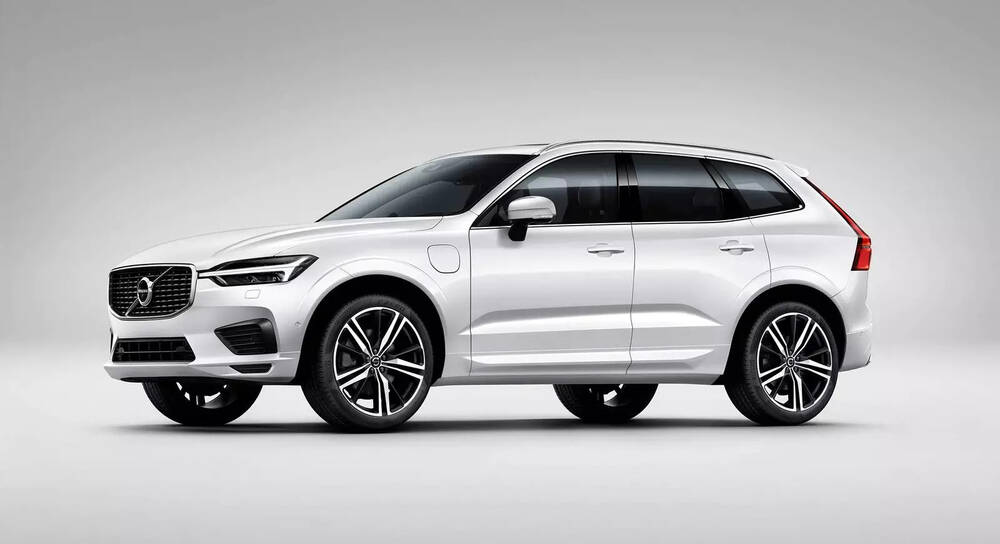
This responsiveness creates confidence that the system will perform reliably under all conditions, eliminating the hesitation that poorly-performing interfaces create.
Google’s interface expertise shines throughout the experience. The design language follows clean Scandinavian principles while incorporating Google’s material design elements, creating a visual system that communicates information efficiently without unnecessary decoration.
The home screen presents a thoughtfully curated selection of applications and information, with additional functions accessible through a logically organized app drawer rather than buried in complex menu structures.
Core Google services integration transforms everyday interactions. Google Maps provides unparalleled navigation accuracy with continuously updated mapping data, real-time traffic visualization, and remarkably accurate arrival predictions.
Google Assistant handles voice commands with exceptional natural language understanding, controlling vehicle functions, answering questions, and managing communications without requiring specific command phrasing. The Play Store offers a growing selection of automotive-optimized applications that extend functionality beyond factory capabilities.
Smartphone integration demonstrates particular thoughtfulness. While Android Auto and Apple CarPlay remain available, the native Google experience often proves superior for core functions, creating less reliance on phone projection. When a phone connects, the transition happens automatically, with media playback continuing seamlessly between the device and the vehicle.
Climate control interface design deserves special mention for its elegant simplicity. Rather than hiding temperature and fan settings in touch menus, these functions maintain permanent screen presence along the bottom edge, with large touch targets that require minimal visual attention. This approach acknowledges that certain controls benefit from consistent placement and immediate accessibility.
What truly distinguishes Volvo’s implementation is the seamless integration between Google’s technology and Volvo’s automotive expertise. Unlike hastily implemented technology partnerships, this collaboration feels genuinely symbiotic. Google’s services enhance Volvo’s traditional strengths, while Volvo’s interface requirements have improved Google’s automotive adaptations.
The result feels neither like a smartphone awkwardly transplanted into a dashboard nor a traditional car interface with superficial technology additions, but rather a cohesive experience specifically designed for automotive use cases.
Also Read: 5 Cars That Actually Hit EPA Ratings and 5 That Never Come Close
5. Mazda CX-90 with Mazda Connect
Mazda’s approach to infotainment stands apart from industry trends in a refreshingly pragmatic manner. Rather than chasing screen size records or feature list expansion, Mazda Connect in the CX-90 focuses relentlessly on minimizing driver distraction while providing essential functionality with exceptional reliability. This philosophy has produced a system that prioritizes driving safety without sacrificing modern capabilities.
The hardware implementation follows Mazda’s driver-centric design principles. A 12.3-inch ultrawide display sits atop the dashboard at an ideal viewing height, positioned to minimize eye movement from the road.
Unlike competitors requiring touch interaction, Mazda employs a rotary controller on the center console that enables precise navigation through menus without requiring visual targeting of specific screen elements. This physical interface can be operated entirely by feel once familiarized, allowing drivers to keep their eyes on the road during system operation.
Performance characteristics prioritize consistent reliability over flashy effects. Screen transitions happen with deliberate, predictable timing rather than elaborate animations that create visual distraction.
Menu structures follow logical hierarchies that remain consistent across functions, creating muscle memory that reduces cognitive load during operation. The system boots rapidly upon vehicle start, with core functions available within seconds and full functionality following shortly thereafter.
Interface design demonstrates exceptional clarity and information hierarchy. Text elements feature high-contrast presentation with appropriately sized fonts that remain readable without requiring focused attention.
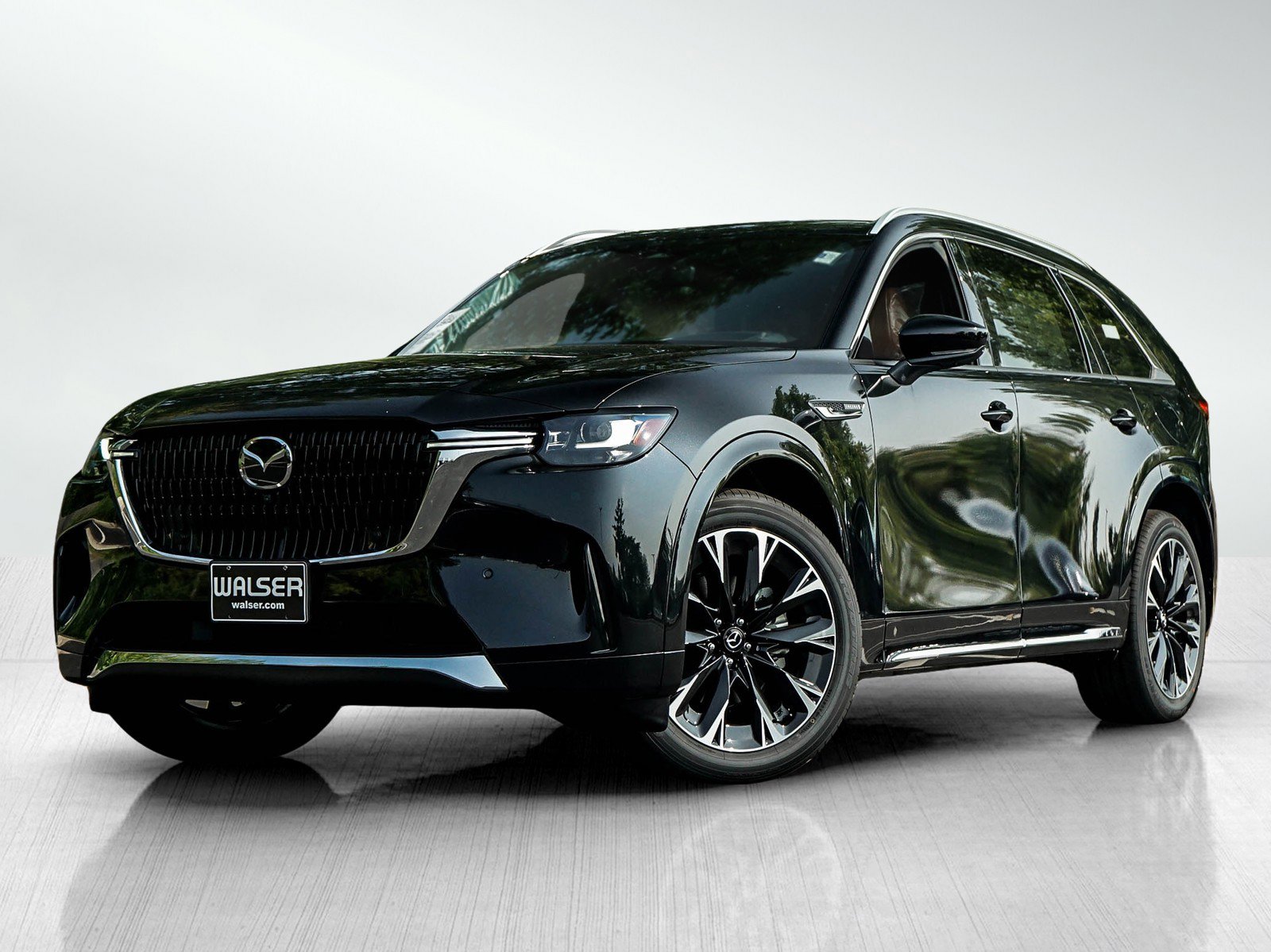
Icon designs favor distinctive silhouettes over intricate details, creating visual targets that register in peripheral vision. The color palette uses restrained contrast to denote important elements without creating visual chaos that pulls attention from driving tasks.
Navigation functionality emphasizes practical guidance over visual spectacle. Map displays maintain essential information while eliminating clutter that can obscure critical details.
Turn instructions appear with appropriate timing and remain visible long enough to register without requiring continuous monitoring. Address entry combines multiple input methods including rotary spelling, voice recognition, and predictive suggestions to streamline destination programming.
Smartphone integration via Apple CarPlay and Android Auto works flawlessly, with wired connections offering bulletproof reliability and recently added wireless capability providing convenient options for shorter journeys.
Unlike systems that struggle with projection technologies, Mazda Connect transitions smoothly between native and smartphone interfaces without the reconnection issues or performance degradation common in competing platforms.
Voice command functionality focuses on high recognition accuracy for core functions rather than attempting conversational interaction. Commands follow intuitive patterns that match natural speech tendencies, with the system providing clear feedback about recognition status and available actions.
This focused approach results in dramatically higher success rates for essential functions compared to more ambitious but inconsistent voice assistants.
What truly distinguishes Mazda Connect is its fundamental understanding of appropriate driving technology. By acknowledging that infotainment interaction represents a secondary task to the primary responsibility of vehicle control, Mazda has created a system that complements rather than competes with attentive driving.
This philosophy extends to system stability, with an exceptional reliability record that avoids the random crashes and reboots plaguing more complex but less refined competitors.
While technology enthusiasts might initially find Mazda’s approach less impressive than flashier alternatives, extended use reveals the profound thoughtfulness behind these design decisions, creating an interface that truly enhances rather than detracts from the driving experience.
5 Cars With Infotainment Systems That Always Crash
Despite fancy marketing and flashy graphics, these notoriously unreliable systems constantly freeze, disconnect, and reboot at the most inconvenient moments during your drive.
Owners report maddening experiences with these glitch-prone interfaces, from navigation that fails during critical turns to phone connections that drop during important calls.
Even after multiple software updates and dealer visits, these problematic systems continue to undermine the driving experience with their persistent instability and frustrating performance issues.
1. Land Rover Range Rover with Pivi Pro
Land Rover’s Pivi Pro infotainment system exemplifies the frustrating disconnect between ambitious design vision and problematic execution. Introduced with promises of revolutionary performance and intuitive operation, the system continues to disappoint owners with persistent reliability issues that undermine the otherwise premium experience of Range Rover ownership.
Hardware specifications initially inspire confidence, a curved 13.1-inch touchscreen featuring impressive resolution and vibrant color reproduction creates an undeniably attractive digital centerpiece.
The display’s positioning atop the dashboard at an optimal viewing height demonstrates thoughtful ergonomic consideration. Physical controls for volume and climate functions suggest a balanced approach to interface design that recognizes the importance of tactile feedback for core functions.
Unfortunately, these promising hardware elements mask fundamental performance deficiencies. Boot times frequently extend beyond 30 seconds after vehicle startup, leaving drivers without access to essential functions like backup cameras during initial movement.
Even after fully loading, the system exhibits inconsistent response times, with identical interactions producing dramatically different results depending on seemingly random factors. Touch inputs occasionally register with jarring delays exceeding several seconds, creating uncertainty about whether commands have registered.
Software stability issues manifest with alarming frequency. Complete system crashes requiring restart occur for many owners on weekly or even daily bases, often triggered by routine actions like changing audio sources or initiating phone calls.
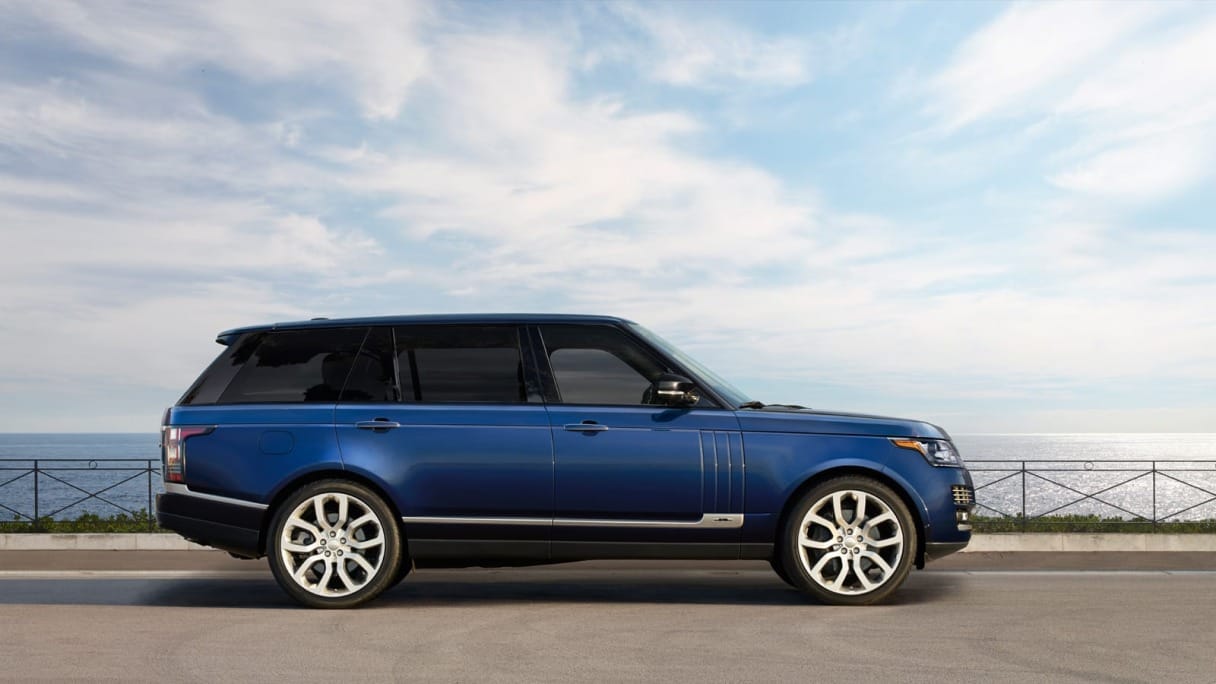
More concerning are the partial failures where individual functions become unresponsive while others continue operating, creating confusion about system status. Bluetooth connections drop unexpectedly during calls, navigation guidance disappears mid-route, and climate controls occasionally become unresponsive until the next vehicle restart.
The interface design compounds these technical shortcomings with questionable organizational decisions. Functions used daily require navigation through multiple menu layers, while less common features sometimes occupy valuable screen real estate.
The home screen configuration, while theoretically customizable, offers limited personalization options that prevent a truly user-centered organization. Icon designs prioritize visual consistency with Land Rover’s brand aesthetic over clear communicative function, resulting in symbols that require memorization rather than intuitive recognition.
Smartphone integration through Apple CarPlay and Android Auto often a saving grace for problematic native systems suffers from inconsistent implementation.
Wireless connectivity works initially but frequently disconnects without apparent cause, requiring manual reconnection attempts that distract from driving. Even wired connections demonstrate instability issues, with projection screens occasionally freezing or displaying visual artifacts requiring system restarts to resolve.
Navigation performance particularly disappoints given the vehicle’s adventure-oriented positioning. Route calculations proceed with inexplicable delays even for straightforward journeys, map rendering struggles to maintain smooth scrolling during movement, and POI searches return questionably relevant results prioritized by obscure criteria.
Most frustratingly, the system occasionally abandons active guidance without notification, leaving drivers without direction until they notice the missing instructions.
Software updates promised to address these issues arrive infrequently and often introduce new problems while attempting to resolve existing ones. The over-the-air update process demonstrates inconsistent reliability, sometimes failing mid-installation and requiring dealer intervention to restore functionality.
This problematic update cycle creates reluctance among owners to apply new versions, effectively trapping them with familiar problems rather than risking new ones.
What makes Pivi Pro’s shortcomings particularly disappointing is the contrast with Land Rover’s otherwise meticulous attention to vehicle engineering. A brand built on overcoming challenging conditions has paradoxically created an infotainment system that struggles with basic reliability during routine operation.
For owners who purchased these premium vehicles expecting technology that matches their considerable price tags, the persistent infotainment issues create frustration disproportionate to their technical severity precisely because they undermine an otherwise exceptional ownership experience.
2. Volkswagen ID.4 with ID. Software
Volkswagen’s ambitious transition to electric vehicles placed tremendous emphasis on their new digital experience, making the profound shortcomings of the ID.4’s infotainment system particularly disappointing.
What was marketed as a revolutionary user interface representing Volkswagen’s digital future has instead become a cautionary tale of prioritizing design aesthetics over functional reliability.
The system centers around a 12-inch touchscreen featuring a visually striking interface with minimalist graphics and a predominantly black background punctuated by subtle color accents.
This aesthetic approach creates an initially impressive visual statement that photographs beautifully in marketing materials. However, the functional reality quickly undermines this positive first impression during actual vehicle operation.
Performance issues manifest immediately upon vehicle startup. The system typically requires 30-45 seconds to become fully operational, with critical functions like climate controls inaccessible during this extended initialization.
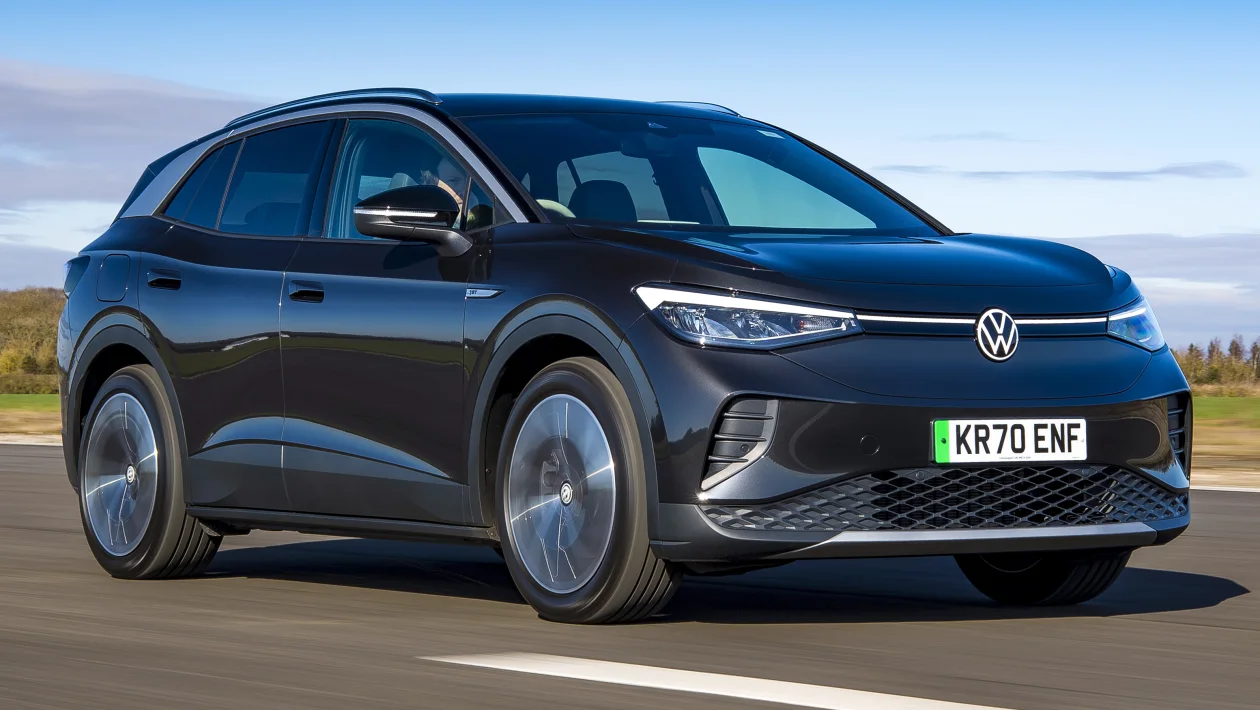
Even after complete loading, touch response remains inconsistent, with identical inputs sometimes registering instantly and other times requiring multiple attempts.
This unpredictability creates driver uncertainty about whether commands have registered, leading to repeated inputs that sometimes trigger unintended actions when the system finally processes the backlog.
Interface design decisions reveal a concerning prioritization of visual minimalism over usability principles. Critical vehicle functions like climate controls and driver assistance settings are buried within menu structures requiring multiple touches to access.
The decision to eliminate nearly all physical controls including basics like dedicated volume buttons forces interaction through the touchscreen for even the most frequently used functions, creating unnecessary distraction during driving.
The capacitive “sliders” below the screen for volume and temperature adjustment demonstrate particularly problematic execution. Without physical definition or haptic feedback, precise adjustment requires visual attention incompatible with safe driving.
The controls’ high sensitivity leads to frequent accidental adjustments when reaching for other dashboard elements, while paradoxically sometimes failing to register deliberate interactions.
Software stability issues compound these design shortcomings with alarming frequency. Complete system freezes requiring vehicle restarts occur regularly for many owners, often during critical driving moments like highway navigation or traffic maneuvers.
Less dramatic but equally frustrating are the inconsistent behaviors where functions operate normally for several days before inexplicably failing until the next system restart.
Navigation functionality demonstrates particular weaknesses in both performance and design. Route calculation proceeds with unexplained delays even for straightforward destinations, map rendering frequently stutters during vehicle movement, and search functionality returns questionable results prioritized by obscure criteria.
The charging station integration a critical function for an electric vehicle often displays outdated availability information and occasionally routes to stations incompatible with the vehicle’s charging architecture.
Voice control capabilities fall dramatically short of competitive systems, with poor natural language recognition requiring precise command phrasing for successful operation. Even when correctly understood, voice commands execute with noticeable delays that discourage regular use, forcing drivers back to the problematic touch interface for most interactions.
Software updates arrive with promising release notes but inconsistent improvement. The update process itself demonstrates reliability issues, occasionally failing mid-installation and requiring dealer intervention to restore functionality.
More concerning is the pattern where updates resolve certain problems while introducing new ones, creating a frustrating cycle of trading familiar issues for unpredictable new behaviors.
What makes these shortcomings particularly disappointing is their contrast with Volkswagen’s traditional strengths in engineering and usability. A brand built on accessible quality has delivered a digital experience that undermines core vehicle functionality through questionable design decisions and inadequate performance optimization.
For early adopters who purchased ID.4s as their introduction to electric vehicles, these persistent infotainment frustrations have unnecessarily complicated their transition to electrification.
3. Lexus NX with Lexus Interface
Lexus’s long-overdue infotainment overhaul for the NX initially generated optimism among loyal customers who had endured years of the brand’s notoriously difficult Remote Touch interface.
The new Lexus Interface system, centered around a 14-inch touchscreen, promised to resolve longstanding usability complaints while delivering contemporary connectivity features.
Unfortunately, this redesign exchanged familiar problems for new ones, creating an experience that continues to frustrate owners despite its modernized appearance.
Hardware specifications suggest considerable promise a generously sized display featuring impressive brightness and resolution creates an imposing digital centerpiece.
The screen’s positioning within easy reach of both driver and passenger demonstrates attentive ergonomic consideration. Touch sensitivity calibration initially feels appropriate, registering deliberate contact without triggering from light brushes during reaching movements.
Performance issues become apparent within moments of system operation. Boot sequence from vehicle startup typically requires 20-35 seconds before full functionality becomes available, creating awkward delays when immediate access to navigation or backup cameras proves necessary.
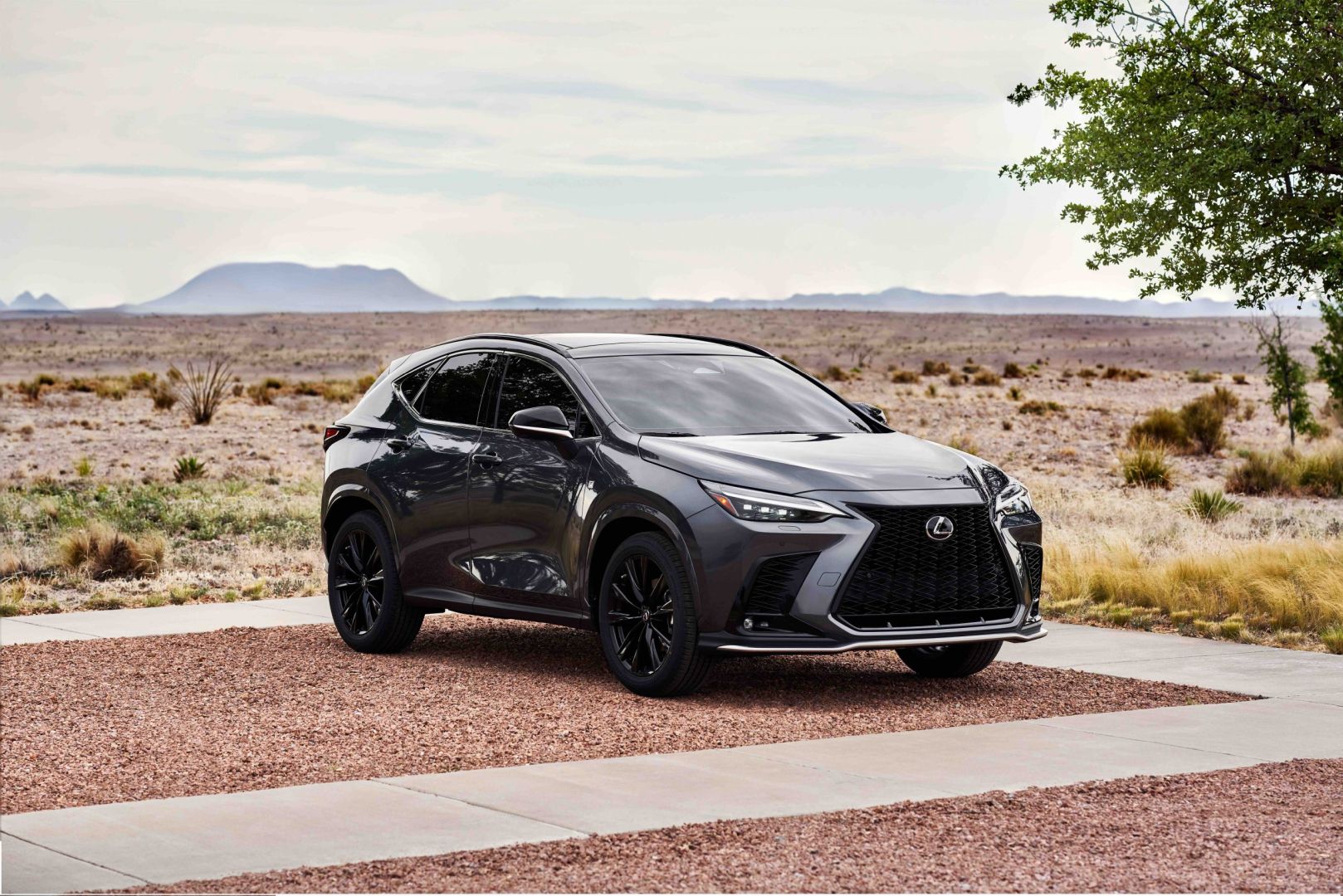
Even after complete initialization, the system exhibits inconsistent response patterns, with identical interactions producing dramatically different timing results seemingly at random. Touch inputs occasionally disappear into a processing void, registering visually without executing their associated functions until several seconds later.
Software stability concerns manifest with concerning regularity. Complete system freezes requiring restart either through vehicle power cycling or the obscure reset procedure buried in settings menus occur frequently enough to create driver anticipation rather than surprise.
More insidious are the partial failures where individual functions become unresponsive while others continue operating, creating confusion about whether problems require intervention or will resolve independently.
The interface design demonstrates fundamental misunderstandings about automotive context requirements. Information density exceeds appropriate levels for glanceable comprehension, with screens containing excessive text elements requiring focused attention incompatible with driving responsibilities.
Icon designs prioritize stylistic consistency with Lexus brand aesthetics over clear communicative function, resulting in ambiguous symbols that necessitate memorization rather than supporting intuitive recognition.
Organizational structure reveals equally problematic decisions. Frequently used functions require navigation through multiple menu layers, while seldom-needed features sometimes occupy valuable permanent screen positions.
The theoretically customizable home screen offers severely limited personalization options that prevent a truly user-centered organization. Features logically grouped in most interfaces appear scattered across different sections without an apparent rationale.
Navigation functionality exhibits particular weaknesses in both performance and usability. Address entry through either touch keyboard or voice input demonstrates poor recognition rates, frequently misinterpreting straightforward inputs.
Route calculation proceeds with inexplicable delays even for simple destinations, sometimes exceeding 30 seconds before presenting guidance options. Once navigation begins, map rendering struggles during complex maneuvers, occasionally freezing momentarily during critical decision points.
Voice control capabilities fall dramatically short of competitive systems and even Lexus’s marketing promises. Command recognition requires unnaturally precise phrasing that contradicts conversational patterns, creating frustration when naturally spoken instructions fail repeatedly.
Even when correctly understood, voice commands execute with noticeable delays that discourage regular use, forcing interaction back through the problematic touch interface.
Smartphone integration through Apple CarPlay and Android Auto often a saving grace for problematic native systems suffers from inconsistent implementation. Wireless connectivity works initially but frequently disconnects mid-journey without apparent cause, requiring manual reconnection attempts that create unnecessary distraction.
Even wired connections demonstrate stability issues, with projection screens occasionally freezing or displaying visual artifacts requiring system restarts to resolve.
Software updates arrive infrequently despite widespread owner complaints, suggesting limited organizational commitment to resolving fundamental issues.
When updates, they typically address specific bugs while leaving core performance and usability concerns unaddressed, creating the impression of superficial rather than structural improvement efforts.
For loyal Lexus customers who endured years of the previous Remote Touch system while awaiting this promised upgrade, the new interface’s shortcomings create particularly acute disappointment, undermining an otherwise premium vehicle experience with daily technological frustrations.
4. Jaguar F-Pace with Pivi Pro
Jaguar’s Pivi Pro infotainment system represents one of the automotive industry’s most profound disconnects between marketing promises and ownership reality.
Introduced with ambitious claims about revolutionary performance and intuitive operation, the system continues to undermine the F-Pace ownership experience with persistent reliability issues and questionable design decisions.
Hardware implementation centers around an 11.4-inch curved touchscreen featuring impressive visual specifications, high resolution, excellent brightness, and vibrant color reproduction, creating an undeniably attractive digital centerpiece.
The display’s positioning within the dashboard demonstrates thoughtful integration with the vehicle’s interior design language. Haptic feedback during interactions provides welcome tactile confirmation absent in many competing systems.
Unfortunately, these promising physical elements mask fundamental performance deficiencies. System initialization after vehicle startup routinely extends beyond 45 seconds, creating awkward situations where drivers must wait for basic functionality before beginning journeys.
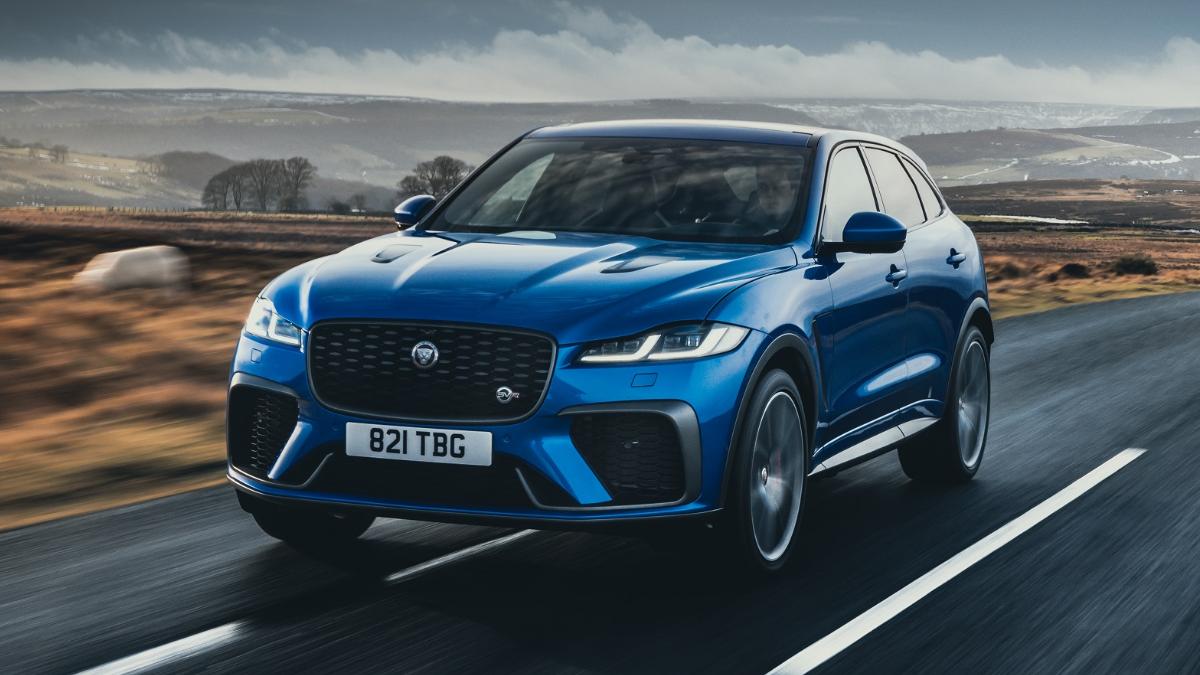
Even after complete loading, the system exhibits highly variable response times, with identical actions producing dramatically different results depending on seemingly random factors. Touch inputs occasionally register with jarring delays exceeding several seconds, creating uncertainty about whether commands have been received.
Software stability issues manifest with alarming frequency across the owner community. Complete system crashes requiring a restart occur for many F-Pace drivers on a weekly or even daily basis, often triggered by routine actions like changing audio sources or accepting incoming calls.
More concerning are the unpredictable partial failures where individual functions become unresponsive while others continue operating, creating confusion about system status.
Bluetooth connections drop unexpectedly during calls, navigation guidance disappears mid-route without warning, and climate controls occasionally become unresponsive until the next vehicle restart.
The interface design compounds these technical shortcomings with questionable organizational decisions. The menu structure follows inconsistent organizational logic, with similar functions sometimes grouped and other times scattered across different screens without apparent rationale.
The home screen configuration, while theoretically customizable, offers limited personalization options that prevent truly user-centered organization. Icon designs prioritize visual consistency with Jaguar’s premium aesthetic over clear communicative function, resulting in symbols that require learning rather than supporting intuitive recognition.
Navigation functionality demonstrates particular weaknesses in both performance and usability. Address entry through either touch keyboard or voice input exhibits poor recognition rates, frequently misinterpreting straightforward inputs.
Route calculation proceeds with inexplicable delays even for simple destinations, sometimes exceeding 30 seconds before presenting guidance options. Once navigation begins, map rendering struggles during complex maneuvers, occasionally freezing momentarily during critical decision points.
Voice control capabilities fall dramatically short of competitive systems despite being prominently featured in marketing materials. Command recognition requires unnaturally precise phrasing that contradicts conversational patterns, creating frustration when naturally spoken instructions fail repeatedly.
Even when correctly understood, voice commands execute with noticeable delays that discourage regular use, forcing drivers back to the problematic touch interface for most interactions.
Smartphone integration through Apple CarPlay and Android Auto often a saving grace for problematic native systems—suffers from inconsistent implementation.
Wireless connectivity works initially but frequently disconnects mid-journey without apparent cause, requiring manual reconnection attempts that create unnecessary distraction. Even wired connections demonstrate stability issues, with projection screens occasionally freezing or displaying visual artifacts requiring system restarts to resolve.
Software updates promised to address these issues arrive infrequently and often introduce new problems while attempting to resolve existing ones. The over-the-air update process demonstrates inconsistent reliability, sometimes failing mid-installation and requiring dealer intervention to restore functionality.
This problematic update cycle creates reluctance among owners to apply new versions, effectively trapping them with familiar problems rather than risking new ones.
For F-Pace owners who selected the vehicle partly based on its promised technological sophistication, these persistent infotainment shortcomings create disproportionate frustration precisely because they contradict Jaguar’s premium positioning and marketing emphasis on digital experience quality.
5. Jeep Grand Cherokee with Uconnect 5
The inclusion of Jeep’s Grand Cherokee with Uconnect 5 on this list might surprise industry observers, given Stellantis’ generally positive reputation for infotainment across its brand portfolio.
However, the implementation in recent Grand Cherokee models demonstrates how platform inconsistency can create dramatically different user experiences even within the same technology family.
While RAM’s version of Uconnect 5 earns praise, Jeep’s implementation suffers from technical shortcomings and questionable customization decisions that frustrate owners.
Hardware specifications initially appear promising a 10.1-inch central touchscreen complemented by an available 10.25-inch passenger display creates an impressive digital presence.
Display quality meets expectations with good brightness, acceptable resolution, and responsive touch registration under ideal conditions. Physical controls remain for core functions like volume adjustment and climate control, suggesting a balanced approach to interface design.
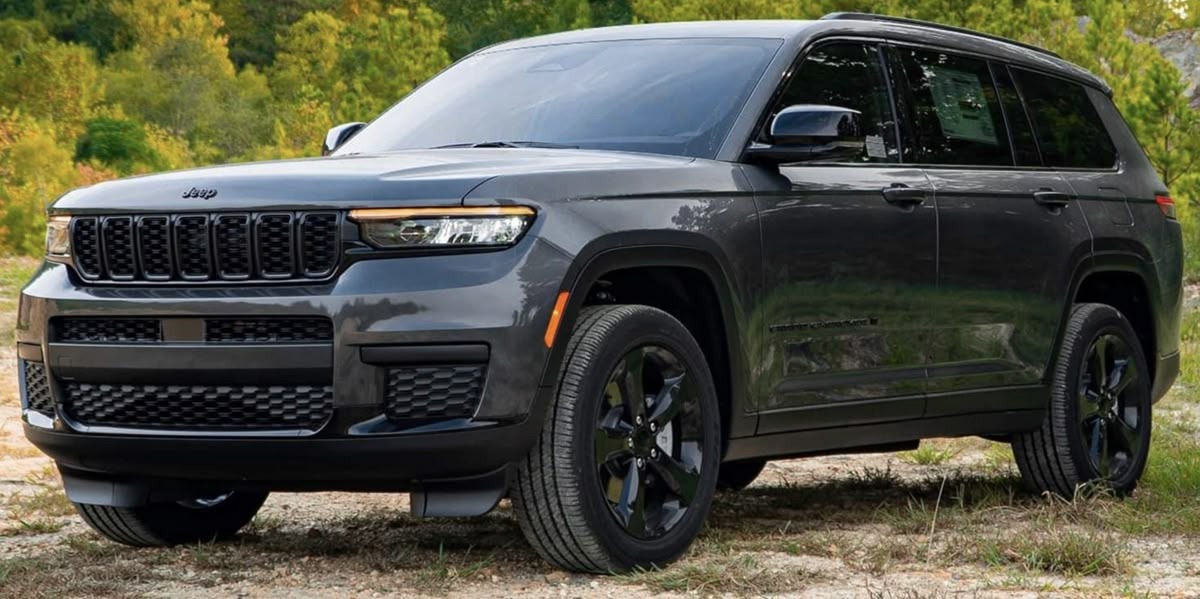
Performance issues become apparent with consistent use. Boot sequence from vehicle startup typically requires 15-30 seconds before full functionality becomes available, creating awkward delays when immediate access to backup cameras or navigation proves necessary.
Even after initialization, the system exhibits inconsistent response patterns, with identical interactions producing different timing results without apparent cause. Touch inputs occasionally disappear into processing limbo, visually registering without executing their associated functions until several seconds later.
Software stability concerns manifest frequently enough to create driver anticipation rather than surprise. Complete system freezes requiring a restart occur regularly, often triggered by routine actions like changing audio sources or connecting Bluetooth devices.
More problematic are the random reboots that happen without user interaction, sometimes occurring during critical driving moments like highway navigation or complex traffic situations. These unprompted restarts typically resolve within 30 seconds but create dangerous distractions and information gaps during their occurrence.
The interface customization layer applied by Jeep demonstrates questionable design priorities. Information density exceeds appropriate levels for glanceable comprehension, with screens containing excessive elements requiring focused attention, incompatible with driving responsibilities.
Off-road specific functions while valuable for Jeep’s brand identity receive prominent placement at the expense of daily-use features that require more frequent access. The resulting navigation structure forces drivers through multiple menu layers for common tasks while dedicating valuable screen real estate to features many owners rarely access.
This customization layer also introduces performance penalties not present in other Uconnect 5 implementations. Screen transitions demonstrate visible stuttering absent in RAM vehicles running ostensibly identical hardware, suggesting inadequate optimization of Jeep-specific interface elements.
Menu navigation exhibits inconsistent timing, with identical actions sometimes executing instantly and other times lagging noticeably, creating uncertainty about system status.
Navigation functionality suffers from both performance and usability shortcomings. Address entry through touch keyboard exhibits inconsistent recognition, occasionally registering incorrect characters despite accurate finger placement.
Route calculation proceeds with unexplainable delays even for straightforward destinations, sometimes exceeding 20 seconds before presenting guidance options. Map rendering during vehicle movement demonstrates periodic frame rate drops during complex visual scenarios, creating a distraction during critical navigation points.
Voice control capabilities perform below competitive standards and even below other Uconnect 5 implementations. Command recognition requires specific phrasing patterns that contradict conversational speech, creating high failure rates for natural instruction attempts.
Even when correctly understood, voice commands execute with noticeable delays that discourage regular use, forcing interaction back through the inconsistent touch interface.
Smartphone integration through Apple CarPlay and Android Auto demonstrates reliability issues not present in other Stellantis vehicles. Wireless connectivity exhibits frequent disconnection problems requiring manual reestablishment, creating unnecessary distractions.
Connection initialization after vehicle startup proceeds with extended delays, sometimes exceeding one minute, during which native system functions also remain partially inaccessible, creating frustrating dead periods at journey beginnings.
Software updates arrive at similar intervals to other Stellantis vehicles but demonstrate inconsistent improvement impact. While identical updates resolve problems across RAM models, they sometimes introduce new issues specific to the Grand Cherokee implementation, suggesting inadequate testing across platform variations.
This inconsistent update experience creates hesitation among owners to apply new versions, effectively trapping them with familiar problems rather than risking new complications.
What makes these issues particularly disappointing is their contrast with Jeep’s rugged reliability reputation and the demonstrably better performance of identical technology in other Stellantis vehicles.
This inconsistency suggests organizational issues in implementation rather than fundamental platform limitations, creating unnecessary frustration for owners of these otherwise capable vehicles.
Also Read: 5 Compact Cars With Outstanding Mileage and 5 That Drain Your Tank

